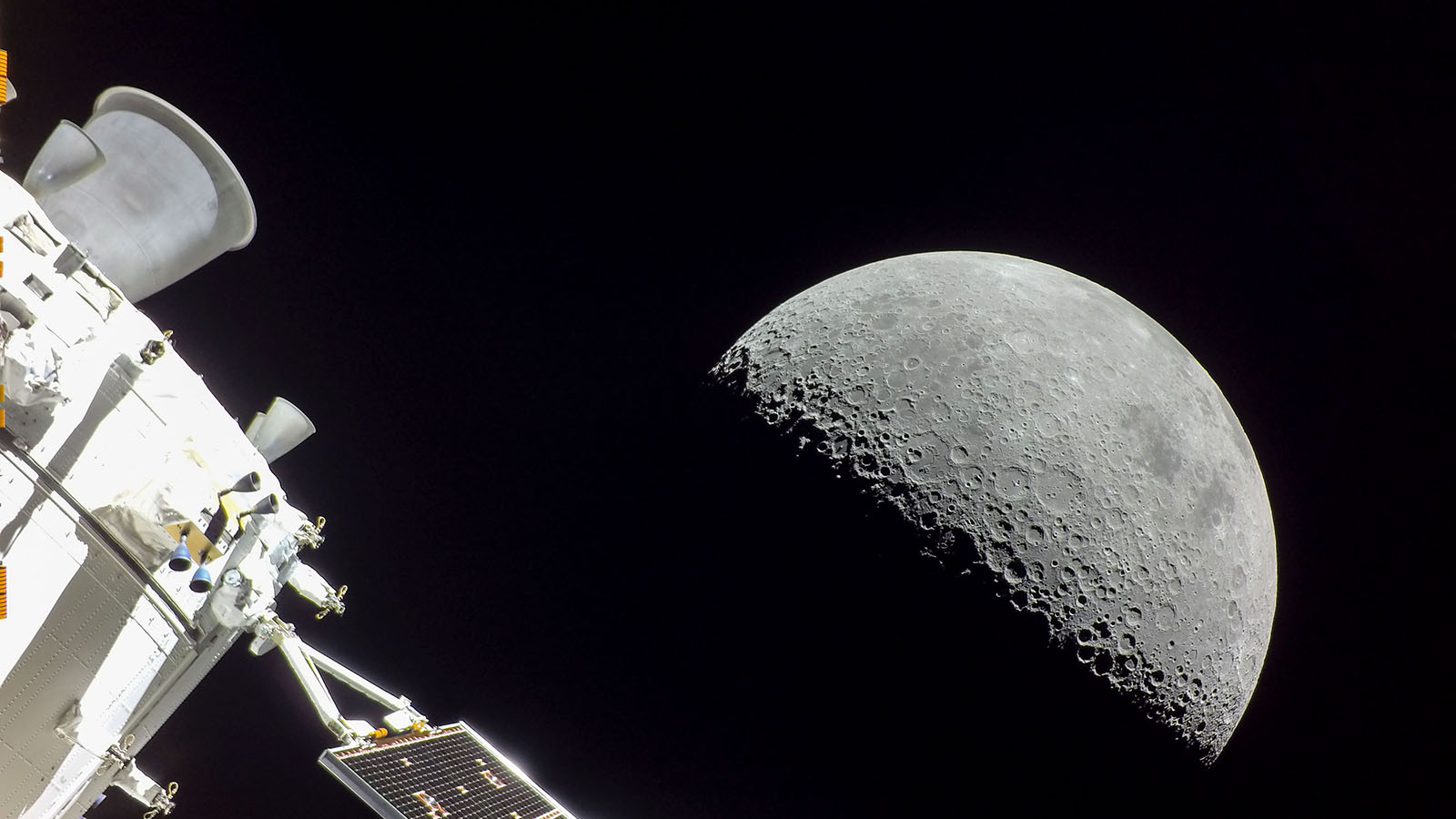
Stay Up to Date
Submit your email address to receive the latest industry and Aerospace America news.

Two years ago, a chunk of a leftover Chinese rocket crashed into the moon, leaving a fresh crater and highlighting an emergent challenge. Knowing that the yawning cislunar expanse from Earth orbit to the moon is about to get crowded, the U.S. Air Force Research Laboratory in New Mexico has a project underway to build a spacecraft to track satellites and debris in cislunar space to prevent collisions and help discern the intents of other nations. While the number of objects in that region is today limited, NASA predicts the next decade will see more human activity — and thus, more junk — in cislunar space than in the last 65 years combined.
Enter Oracle, formerly the Cislunar Highway Patrol System, a refrigerator-sized satellite in design by Advanced Space of Colorado under a $72 million contract with AFRL. A critical design review is planned for this year so that Oracle can be ready in time for its launch in 2027 to an orbit near the Earth-moon Lagrange Point 1, a position of gravitational and motion equilibrium “where an object will appear to be locked in place along the Earth-moon line,” as Neil deGrasse Tyson has described it. By orbiting this position most of the way to the moon, Oracle will have a close-up view of objects that, from the vantage point of ground telescopes and Earth-orbiting satellites, are often obscured by solar glare.
Oracle’s onboard photography and image processing equipment will need to overcome a hellish tracking problem. In cislunar space, the gravitational forces of both Earth and the moon — and to a lesser extent, the sun and Jupiter — affect the trajectories of small objects like satellites and rocket parts, making their movements difficult to predict. Oracle, which will be equipped with a combination of camera and telescope, must also have onboard detection and processing tools that can determine which distant and fast-moving specks are worth photographing.
By capturing enough images, scientists hope to determine the orbits, speed and distance for a wide range of objects. “There’s going to be lots of hay in the haystack that we’re looking for,” AFRL’s James Frith, principal investigator for Oracle, says.
The great distance back to Earth — 10 times farther than geostationary Earth orbit — creates a software development challenge. For transmission, each image must be compressed from tens or hundreds of gigabytes into a series of 10-kilobyte information packets in text format. While NASA missions have shown that detailed images can be sent to Earth from deep in the solar system, Oracle will be transmitting to commercial radio dishes rather than to NASA’s array of Deep Space Network antennas. AFRL wants to receive images in minutes or hours, versus the more typical days or weeks, since timely knowledge could “prevent potential close approaches or conjunctions with functioning spacecraft,” Frith says.
Advanced Space and subcontractors General Atomics and Leidos are working on the challenge of maintaining orbit near L1 while sensing and tracking moving bodies. For NASA’s Cislunar Autonomous Positioning System Technology Operations and Navigation Experiment, or CAPSTONE, program, which sent a 25-kilogram cubesat owned by Advanced Space into orbit around the moon in 2022, Advanced Space has been testing the accuracy of its tracking software and the calculations that estimate a spacecraft’s state, or orbital shape and position, from images captured in cislunar space.
About Hope Hodge Seck
Hope is an award-winning freelance reporter and editor based in Washington, D.C., who has covered U.S. national defense since 2009. A former managing editor of Military.com, her work has appeared in The Washington Post, Popular Mechanics and Politico Magazine, among other publications.
Related Posts
Stay Up to Date
Submit your email address to receive the latest industry and Aerospace America news.



